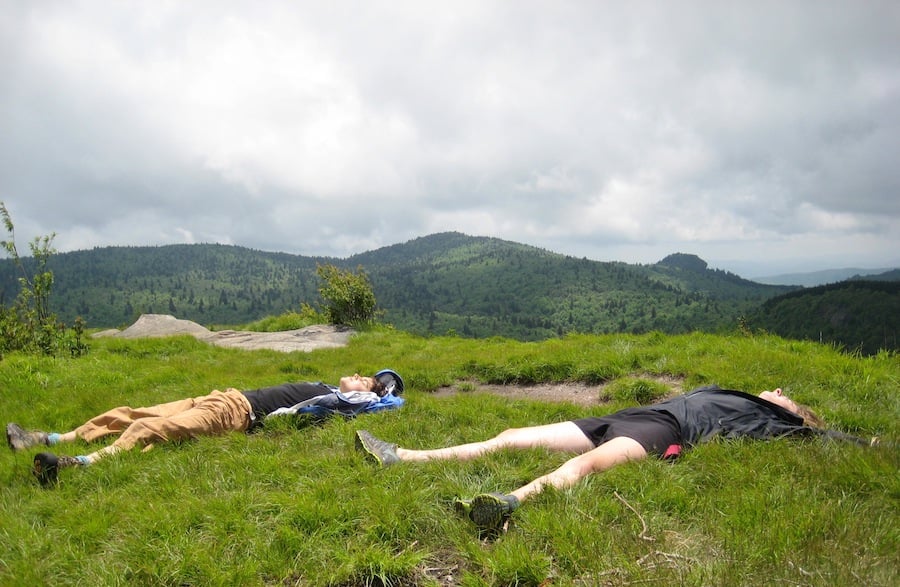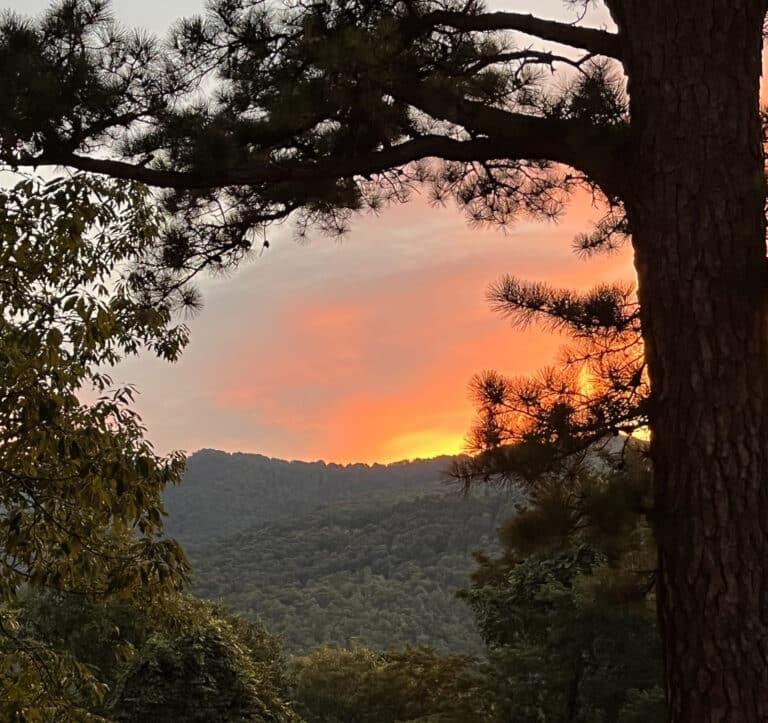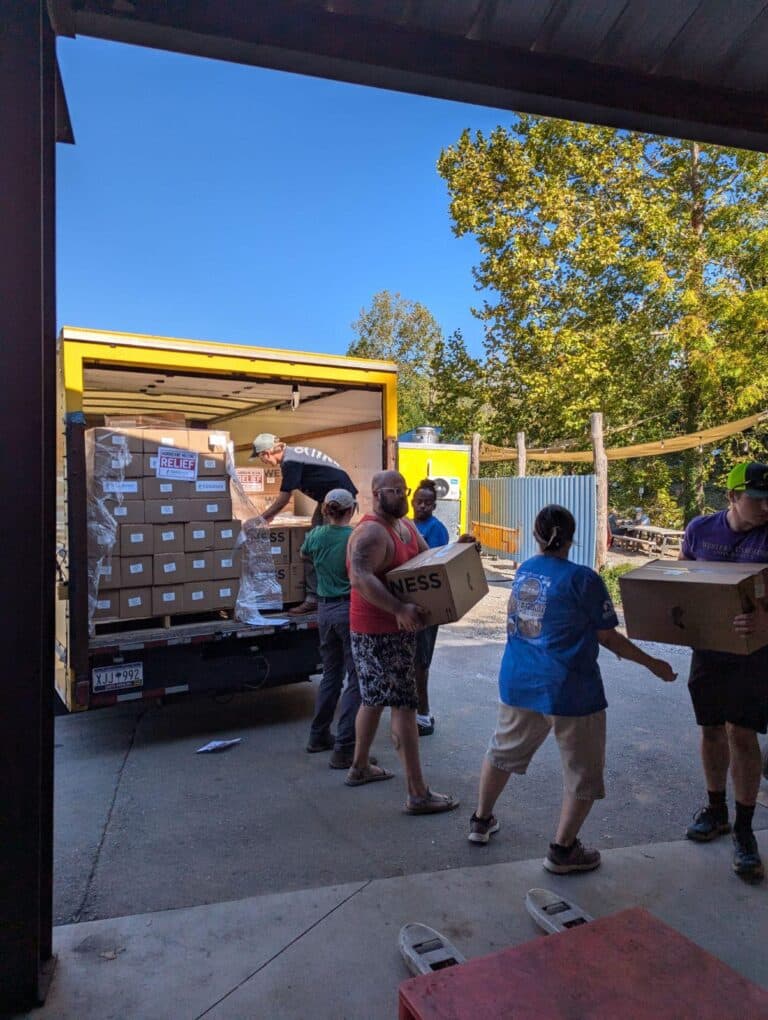When I was first with diagnosed with Type 1 diabetes, backpacking became yet another line on my mental list of things I’d probably not be able to do now that I was managing such a complicated condition.
Although the first thing they reassured me of (while I was still in the ER, without me asking), was that with the advent of modern technology, I would be able to safely have children, they did not assure me I’d still be able to romp through mountain streams, swim in crystal clear pools, and sleep under the stars. They did not go so far as to assure me that I’d still be able to stretch my skirt over my kayak and paddle all day, or travel to third world countries. Needless to say, the first consolation did not address my main concerns.
Eight years have passed since then, and as I get to know myself more and more as a person with diabetes, I learn that to do what I’ve always loved to do and to try new things is definitely possible, but both require more planning. It’s been a long road to accepting that my version of spontaneous will not look like it used to, when I could decide on a whim to jump in a car headed for Gauley Fest or throw some granola in my pack and head off for a weekend of camping, like I had a few months before my diagnosis. My version of spontaneous does not need to look like anyone else’s, and I’ve learned to validate that for myself by moving one adventure at a time off of the, ‘Can’t Do It’ list, and onto the, ‘Plan It!’ list.
The first time I went backpacking with diabetes (and also with an ex-boyfriend, a seasoned backpacker himself) the car ride to the trailhead was mortifying. My brain was in an endless feedback loop of, “What did I forget? What if I my blood glucose meter stops working? What if my insulin gets hot? What if I run out of honey and glucose? I’m going to die on the trail and let all the people who love me down!” And so on.
I told myself to pull it together and then we plunged into the woods. The trip was miraculous. We backpacked for just one night, up and over Black Balsam, down and around, to camp at my beloved Flat Laurel Creek in the shadow of Sam’s Knob. We gazed at a small fire. We ate food that tasted like a five-star meal as we spooned it out of crinkly aluminum bags. During the hike I downed an entire honey bear just to keep my blood sugar high enough to walk on. I’ve learned that the added weight of my pack causes me to burn glucose at a rate like nothing else, and it takes me a while to get enough carbohydrates in my system to sustain the activity. Luckily I love honey and I don’t get to eat it like a bear (or straight from the bear) as often as I’d like. There were things I forgot, non-essentials, but it was hard to miss them. From day one backpacking made me feel self-sufficient and whole in a way that I hadn’t since that day at the hospital, when I came to grips with the fact that my pancreas was no longer working for me.
Type 1 diabetes is a funny condition. In one way you get to know yourself much more intimately than before, taking over the job of organs and hormones that once ran themselves. In another way, there are so many mysteries, so many unanswered questions, from, “Why has my body turned on itself?” (Stop that immune system, chill out!!) to, “Why do I wade through a dizzy dream of low blood sugars one day and spend other days slogging through persistent high blood sugars that make me lethargic and frustrated?” With diabetes there are no guarantees, no continuity, and a thousand variables, except that it is always there, accompanying you like a weight you can never put down.
But the good news is, and here’s the point I’ve been switchbacking my way around to: carrying a weight can make you stronger! And, beautifully, it can make you more prepared to face whatever arises in your life with positivity, preparedness, and resilience. Those things, I’ve found, are essential in both chronic condition management and adventuring, whether it be backpacking in the woods, through a foreign country, or entering bravely into a new job or life experience!
Most recently backpacking led me to celebrate Independence Day 2014 under the stars and half moon in a small clearing on Higgins Bald with my house-mate and dear friend. Sweating our way through the steep Appalachian Mountains has brought us closer, each of us seeming to remember what the other forgot, one whipping out hummus, one bringing sunflower seed butter to slather on shared tortillas. More than that, we’re there for each other to share laughter and glorious sunsets. We joked, as we tore through the underbrush searching for the open space that gave Higgins Bald its namesake, that someone must have applied a heavy dose of ‘Rhodo-Gain©’ to this mountain man, because the hillside is now covered with scrubby undergrowth and a tangle of rhododendron and laurel.
Before we left I ran through the list of things I would need to survive in the woods, but since I’ve developed a go-to paper checklist, with my medical supplies listed next to my camping essentials, diabetes no longer gets all the attention when I’m planning. Loading my pack is an equalizer for me; everyone has to deliberate, prepare, and strategize before heading off into the woods and away from their myriad belongings and comfortable routine. I’m managing my survival every day anyway, and with my pack on, I’ve got everything I need. The heaviness of it helps me to realize that the time and energy diabetes takes, although it can be huge, is necessary. More than that, it’s worthwhile. Planning for and honoring my unique condition allows me to reach new heights and places, and feel as good as I can along the way.
For about a year and a half I’ve worn the Omnipod insulin pump. It’s a funny little thing if you’re new to the concept, comprised of a PDM, which is like a remote control the size of a chunky phone, and a small hard plastic pod, which looks like a tiny computer mouse. Every three days I fill a new pod (or ‘big white leech thing’ like a friend once called it), with insulin and stick it on to my body (it uses strong tape). I check my blood sugar on the PDM about ten times a day. Once I count and enter the amount of carbohydrates I am going to eat it suggests a dosage which I can accept or alter. I am able to choose a higher or lower baseline rate depending on my activity level. It’s my own personal perma-pack of insulin, a little bit like an external pancreas, and it’s helped me to live a more flexible life than when I was on 4 to 6 shots a day.
We people with Type 1 diabetes are always toting around something: the things we need to actually balance our blood sugar every minute of every day and the emotional and mental load of taking over for one of our organs. On the trail, the load is simplified and well balanced. The smell of Galax and rich soil, the sight of the mountains and trickling sound of streams helps my mind even out to smooth waves. On the way to Higgins Bald, I realized that my mental checklist has become manageable. I reviewed it calmly: “insulin, a way to get insulin into my body, glucose, water….okay, I have all I need to survive.” It was freeing.
Maybe because managing diabetes requires me to constantly consider what I need to survive day in and day out regardless of where my adventures take me, I have gained an appreciation for what I really need to thrive and what is excess. In the woods, my journal tends to lie dormant. There is no space for technology, for vanity, or for ‘entertainment.’ There is also no need. The woods etch beauty into your mind, they are accepting and non-judgmental, and are endlessly captivating in a way that stills my drive for external stimulation.
There is a simplicity in the trees and rocks that allows silence to be nurturing and brings a person into the present moment whether alone or with friends. With my pack on my back I feel strong, joyful, and whole, carrying the weight of diabetes in stride.
— Katie Souris works as the Coordinator of Preventive Health at the YWCA and writes a blog about living adventurously with diabetes in mind at: thesweetadventurer.wordpress.com/








